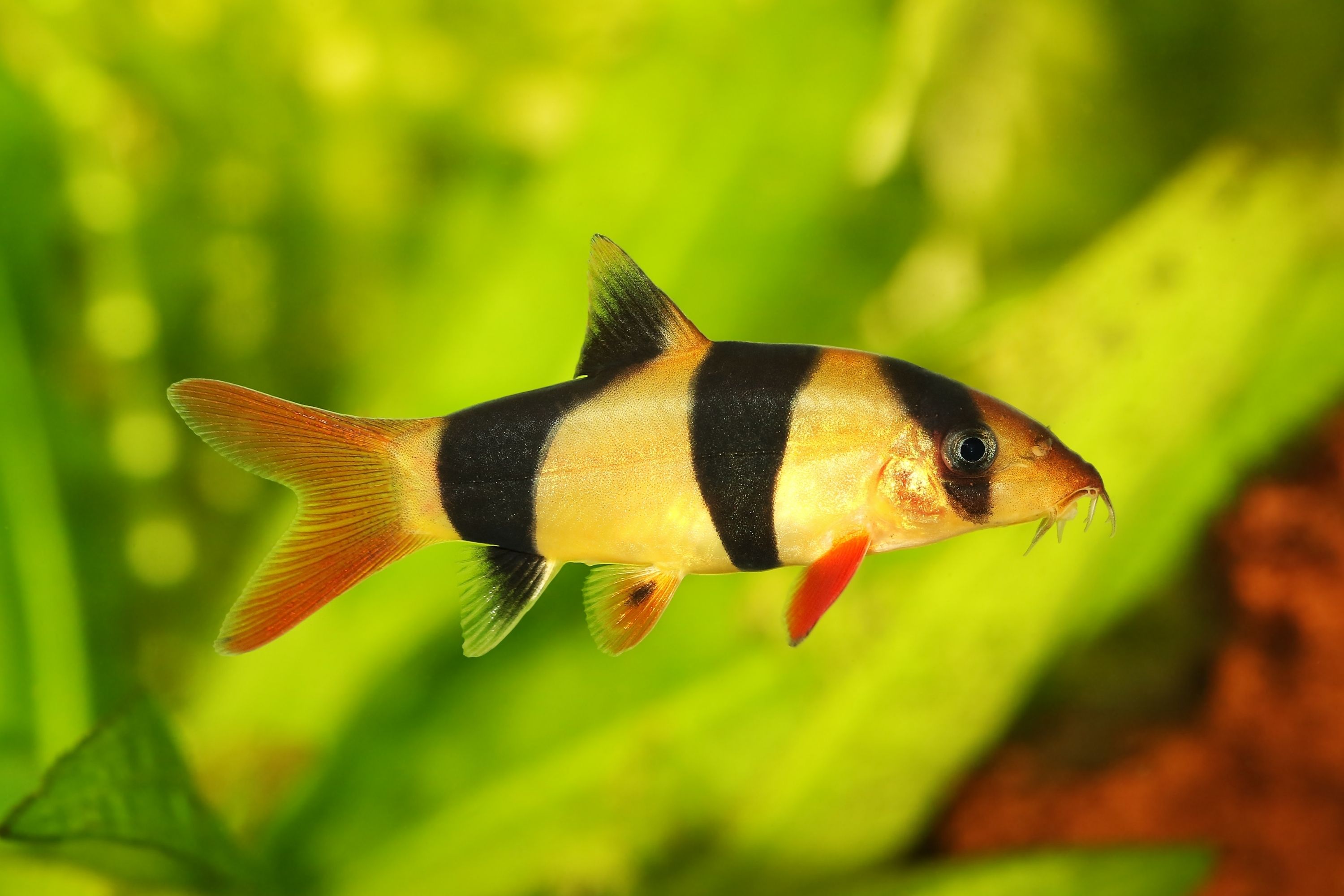Clown loach
(Chromobotia macracanthus)

Description
The clown loach (Chromobotia macracanthus), or tiger botia, is a tropical freshwater fish belonging to the botiid loach family. It is the sole member of the genus Chromobotia. It originates in inland waters in Indonesia on the islands of Sumatra and Borneo. In Sentarum, West Borneo that fish named: ulanguli. It is a popular fish in the freshwater aquarium trade and is sold worldwide. Information about the maximum size of the clown loach varies, with some estimates ranging up to 20-30 cm (7.9-11.8 in), and with typical adult sizes ranging from 15-20 cm (5.9-7.9 in). The fish's body is long and laterally compressed, with an arched dorsal surface and a flat ventral surface. Its head is relatively large and its mouth faces downward with thick, fleshy lips, and four pairs of barbels. The barbels on the lower jaw are small and difficult to see. Clown loaches can make clicking sounds when they are happy, being territorial (used as a type of weapon/warning) or mating. This sound is produced by the grinding of their pharyngeal teeth. The body is whitish-orange to reddish-orange, with three thick, black, triangular, vertical bands. The anterior band runs from the top of the head and through the eye, the medial band lies between the head and the dorsal fin, and wraps around to the ventral surface, and the posterior band covers almost all of the caudal peduncle and extends to the anal fin. There is some regional colour variation within the species; the pelvic fins on fish from Borneo are reddish-orange and black, while the pelvic fins on fish from Sumatra are entirely reddish-orange. The fish is sexually dimorphic, with females being slightly plumper than males. In addition, the tips of the tail on the male curve inwards slightly, whereas the females have straight tips. The fish has a movable spine that lies in a groove below the eye, which may be extended as a defence mechanism. The spine may cause a painful wound, but is not venomous. It also may be used as a predation tool as it is set close to the mouth. Clown loaches are native to the islands of Sumatra and Borneo in Indonesia. Clear stream environments provide the optimal habitat for clown loaches, but biannual monsoon flooding forces the fish to move into flooded flood plains, or murky or blackwater rivers or lakes, for 7-8 months of the year, and clown loaches are commonly found in the flood plains of hilly areas. Breeding adults migrate to smaller waterways to spawn annually.
Taxonomic tree:







